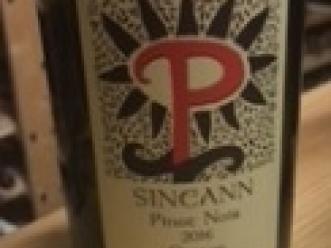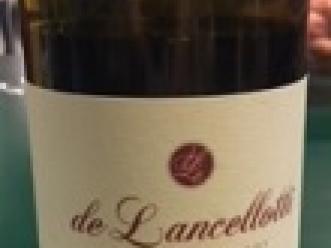For many wine lovers, Oregon's Willamette Valley is synonymous with pinot noir, and only pinot noir. The climate of the mountain-shielded valley is perfect for this famous grape from Burgundy. Pinot noir not only gave the Willamette Valley its start, it catapulted the region to stardom when a pinot noir from The Eyrie Vineyards took first place in Gault-Millau's 1979 Paris wine tasting. And, as they say, the rest was history – or is history, for the Willamette Valley is still evolving as a wine region.
From its improbable beginning as home to several enterprising, quasi-broke University of California, Davis graduates looking for places to grow cool-climate grapes to its current place among the world's best pinot noir regions, the Willamette Valley has made its own dreams come true.
Willamette Valley History
David Lett (The Eyrie Vineyards), Charles Coury (Charles Coury Winery, now David Hill Vineyard) and Dick Erath (Erath Winery) began the process that transformed the Willamette Valley into a wine region in the mid-1960s.
The three UC Davis graduates, thinking and working independently, decided that Oregon's Willamette Valley might just be the best place in North America to grow pinot noir grapes. Separately, they left California, moved to Oregon, and began planting vines and making wine.
They were soon followed by other Willamette Valley wine pioneers, who continued the tradition of small wineries managed by people who truly believed that Oregon could produce top-quality wines.
It wasn't easy; almost all the newcomers to the Willamette Valley had to work other jobs to make ends meet. Dick Erath lived in a cabin formerly occupied by a logger – without heat – while he worked to establish his winery. David Lett converted an old – and no doubt odorous – poultry farm into a winery. He planted the very first pinot noir grapes in the valley and the first pinot gris vines in the United State in 1966, and, 13 years later, led the Oregon pinot noir winemakers onto the world stage with his stunning 1979 Paris showing.
The Willamette Valley American Viticultural Area (AVA) was established in 1984, and six separate AVAs within the Willamette Valley AVA have been created since 2004. Throughout its history, the Willamette Valley AVA's growers and producers have worked together to create a system of regulations that ensures quality and encourages sustainable viticulture. Oregon is known for its commitment to preserving and protecting the environment, and the Willamette Valley's growers and winemakers are at the forefront of the world's organic wine and sustainable agriculture movements.
Geography, Climate and Soils
The Willamette Valley is quite large – over 5,300 square miles in area – and is sheltered by mountain ranges on three sides. The Cascade Mountains form the Willamette Valley's eastern border. To the south, the Calapooya Mountains mark the border of the AVA. On the west, the Willamette Valley AVA ends at the Coast Range Mountains. The Columbia River marks the Willamette Valley's northern boundary.
The Willamette Valley's winters are cool and wet. The summers tend to be dry and on the cool side, at least in comparison to California, Oregon's southern neighbor. Summers can be quite cloudy. The Pacific Ocean's influence affects the region's climate, although the Coast Range Mountains mitigate some of the ocean's effects.
Rainfall varies from place to place within the Willamette Valley. The Chehalem Mountains AVA receives as much as 60 inches of rain per year, while other parts of the Willamette Valley average anywhere from 30 to 45 inches of rain annually. Rain during the fall harvest can be a problem for growers. Fungus, damp weather and even drought can also threaten the vineyards of the Willamette Valley. Frost is rarely an issue.
Soils in Willamette Valley vary from place to place. Ancient seas once covered the region, and equally ancient volcanoes deposited basalt and Jory loam, known for its red color, in parts of the Willamette Valley. Floods and river action have created alluvial deposits.
Given such a wide variety of soil types, as well as the microclimates common in a hilly or mountainous area, it is no wonder that the Willamette Valley AVA contains several sub-appellations, each defined as its own AVA.
Willamette Valley's Sub-Appellations
Within the Willamette Valley AVA, six areas have been designated as separate AVAs. Part of the Willamette Valley AVA lies outside the boundaries of these six sub-appellations. One sub-appellation, Ribbon Ridge, is contained within another sub-appellation, the Chehalem Mountains AVA.
The six AVAs within the Willamette Valley AVA are:
• Dundee Hills, established in 2004;
• Yamhill-Carlton District, established in 2004;
• Ribbon Ridge, established in 2005;
• McMinnville, established in 2005;
• Chehalem Mountains, established in 2006; and
• Eola-Amity Hills District, established in 2006.
Willamette Valley Grape Varieties
Pinot noir, of course, holds pride of place in the Willamette Valley. According to the Oregon Wine Board, almost 76 percent of the pinot noir grapes grown in Oregon come from the Willamette Valley – 8,514 acres in 2008.
Chardonnay is the second most popular wine grape variety in the Willamette Valley, followed by pinot gris, riesling and gewürtztraminer. Several other wine grape varieties are planted here, including sauvignon blanc, syrah, pinot blanc and viognier, but pinot noir is by far the predominant variety planted in the region.
Visiting Willamette Valley Wineries
Like the rest of Oregon, the Willamette Valley prides itself on being the anti-California. Typically, wineries are smaller and more intimate than their California cousins, reflecting the Oregonian "can-do" attitude.
Still, you will find that Willamette Valley wine tourism is well-developed. You can book all kinds of winery tours, from eco-tours featuring organic wineries to limousine tours and even helicopter trips to wineries. Visitors can choose from over 200 wineries within the Willamette Valley AVA, so you're bound to find a winery or two that suits your taste.
If you are interested in tasting wines at specific wineries, you may be asked to pay a tasting fee, typically refundable if you buy a certain amount of wine. Expect some wineries to be closed on Mondays and Tuesdays. Be sure to check with the wineries you'd like to visit before you travel to Oregon; some wineries ask you to reserve tours in advance.
The Eyrie Vineyards, David Lett's pioneering establishment, offers tastings for a modest fee of $5. If you buy two bottles of wine, you'll get your tasting fee back.
Erath Winery, another historic winery in the Willamette Valley, also offers tastings. Erath's tasting room is open daily from 11:00 a.m. to 5:00 p.m.
Domaine Drouhin Oregon, founded by Robert Drouhin of Maison Joseph Drouhin in France's Burgundy wine region, offers winery tours ($25; reserve in advance) and tastings ($10; refundable with minimum purchase) Wednesday through Sunday from 11:00 a.m. to 4:00 p.m. Domaine Drouhin was the first winery in Oregon to plant Dijon clones of the pinot noir grape. Domaine Drouhin Oregon is known not only for its outstanding pinot noir wines but also for its well-regarded chardonnays.
Beaux Frères Vineyards and Winery, co-owned by wine expert Robert Parker, Jr., offers tours in the spring, summer and fall months. Contact the winery for details.
What's Next for Willamette Valley?
Oregon continues to lead the way in sustainable viticulture and environmentally-friendly winemaking practices. Willamette Valley pioneered the "Salmon-Safe" wine concept, which focuses on maintaining the cleanliness of Oregon's rivers, which are spawning grounds for native salmon. Salmon must return to the rivers they hatched in to spawn, which means that keeping these rivers clean is essential if the species is to survive. Wineries and vineyards have a critical role to play, particularly in the northern Willamette Valley near the Columbia River.
The Willamette Valley has positioned itself at the forefront of North American pinot noir production. The acclaimed International Pinot Noir Celebration, held each July in McMinnville, brings together wine aficionados and foodies from around the world. Memorial Day weekend and Thanksgiving weekend are also special times in the Willamette Valley. Events such as these focus world attention on Willamette Valley wines and showcase the region's best wines.
While Willamette Valley growers and producers will always have to contend with nature's capriciousness in the forms of autumn rain, summer drought and fungus, it appears they are taking full advantage of their assets – small, friendly wineries; sustainable agricultural practices, which attract more attention each year; and a focus on quality over quantity, regardless of the grape variety or bottling. The Willamette Valley and its six sub-appellations have proven themselves on the world's wine stage. Given the right weather conditions, the growers and wine producers of the Willamette Valley can hold their own – and they will – against all comers.






